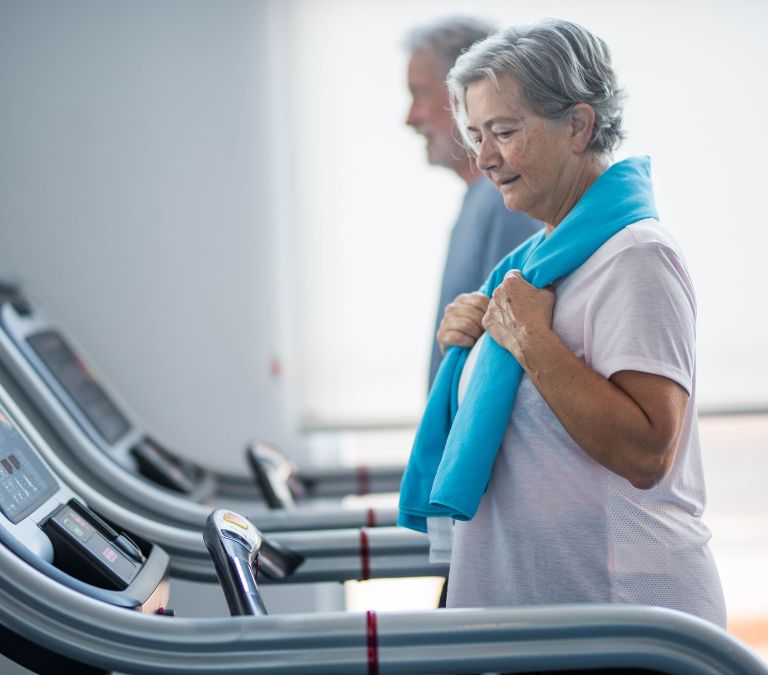Menopause is a significant transition in women’s lives during which we may experience exhausting physical and mental symptoms. These experiences have a substantial impact on their daily lives. Menopause can have varying side effects such as hot flashes, insomnia, reduced libido, increased anxiety, and depression.
To reduce the effect of menopause on their lives, many women undergo hormone replacement therapy (HRT). Others rely on supplements to manage general or specific symptoms. However, multiple studies show that exercise is one of the most impactful lifestyle changes that can help alleviate these niggling symptoms. Training during and after menopause offers benefits, such as:
- Preventing weight gain: During menopause, women usually lose muscle mass and gain abdominal fat. Frequent physical activity can aid in preventing weight gain.
- Reducing the risk of cancer and other diseases: Weight gain during menopause can have severe consequences for your health. Excess weight increases the risk of cardiovascular disease and diabetes. Regular exercise helps mitigate these risks.
- Strengthening bones: Exercise can slow down bone loss, reducing the risks of bone fractures and osteoporosis.
- Boosting overall mood: Engaging in physical activity lowers the risk of depression and cognitive decline.
Together we will explore seven of the best exercises for menopause you can do during this time to help ease symptoms and maintain good health.
Top 7 Best Exercises For Menopause
- Walking
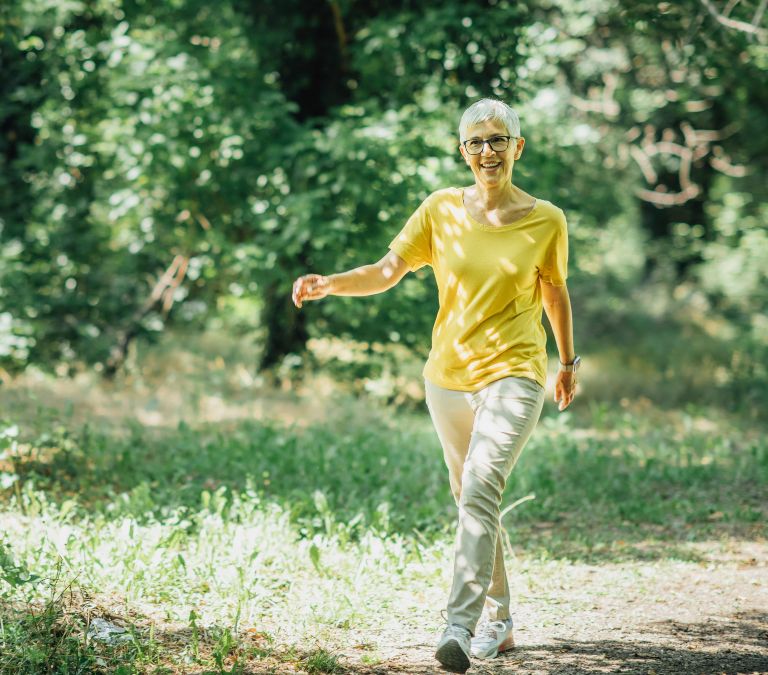
Don’t know how to start? Walking could be a good start. Walking is a cheap and easy aerobic exercise you could do, it is considered one of the best exercises for menopause. Walking at a brisk pace is a great calorie burner. It can help mood swings because aerobic exercises help fight depression and anxiety. Walking is a good start because it helps warm up with light activity and range of motion exercises before moving on to a more strenuous workout. You could also walk around the yard, or better still, you could get a treadmill (if you can afford to). I advise getting around seven minutes of brisk walking accomplished every day.
So when is the best time to go for a walk? Maybe you’ve never been a regular walker; according to a 2016 study, going for a light 10-minute walk right after eating helped lower blood sugar levels. You were getting your body moving after a meal helps with nutrient absorption and also lowers your insulin response.
- Stretching
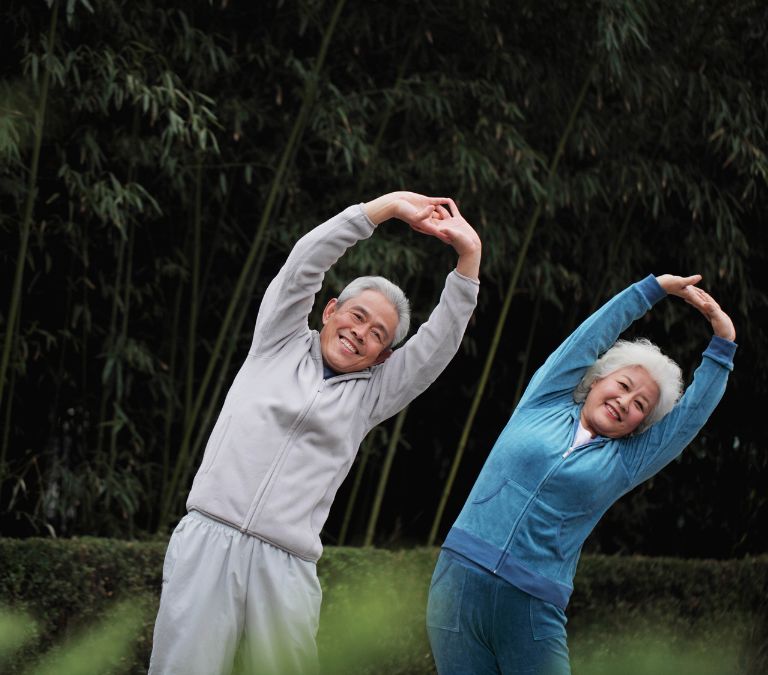
You can’t list the best exercises for menopause without mentioning stretching. Stretching is also an excellent aerobic exercise you could do to help manage menopausal symptoms such as cramps, soreness, and stiff joints. Consistent stretching helps improve flexibility and also helps relieve soreness and tension in the muscles. It is also known to improve blood circulation and help improve posture. Setting aside time to stretch daily could be essential in dealing with menopausal symptoms.
Here are three simple stretches we could all do daily to help us protect our back, leg, and hip mobility:
- Touch your toes with your feet shoulder-width apart and a slight bend in the front of your knees. It will stretch the hamstrings and relieve stress in the lower back.
- Stand on one leg. It will help stretch your quads. (hold onto something for balance if necessary) and tuck your foot up behind you into your backside by grabbing the front of your ankle and pulling it up behind you into your backside. Rep on the opposite side.
- Stand on a step, and allow your heels to drop until you feel a deep stretch through your calves. It helps to stretch those calves.
- Place your feet shoulder-width apart. Extend your toes slightly. Bring your hands together, palms facing out, and bring them to your chest. Maintain this position while twisting from side to side. Maintain a stable lower body and keep your head aligned with your torso.
- Put your hands on your hips, and stand upright with your feet. Then, as if you are hula-hooping, circle your hips five times clockwise, then five times counterclockwise. Try not to move your shoulders and keep your stomach in.
- Swimming
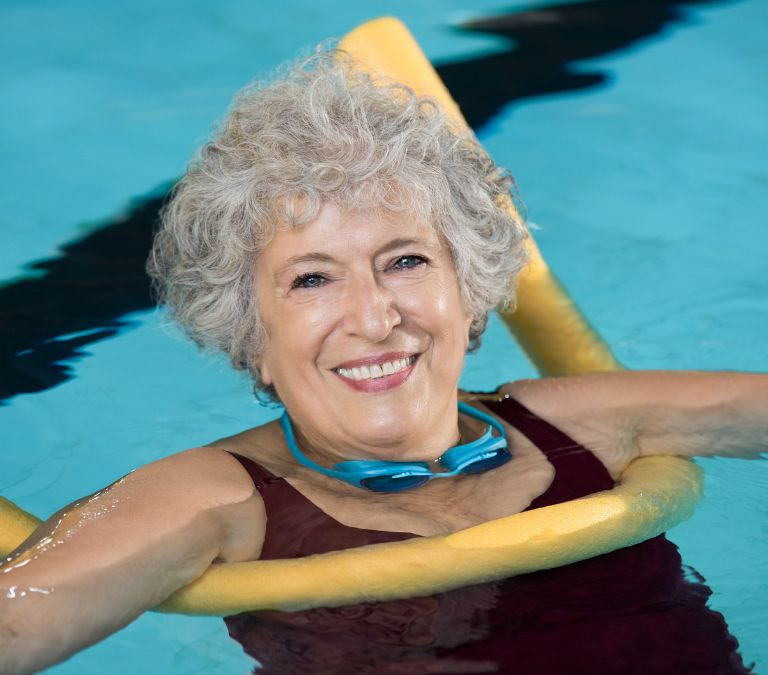
Get your swimwear ready because swimming is another beneficial exercise for menopausal women because it is less strenuous on joints and muscles, unlike running and carrying weights. When estrogen levels drop during menopause, you become more susceptible to heart diseases; aerobic exercises such as swimming can help reduce the risk of such conditions. Experts recommend women get around 150 minutes of moderate swimming each week.
Here are some swimming exercises that are sure to help:
- Water walking: This swimming pool exercise is an excellent way to start. Wade in until you’re about waist deep, then walk around the pool like you would on land. Swing your arms; maintain a straight back; avoid walking on your tippy-toes.
- Arm circles: Submerge yourself in the pool until your neck and head are out of the water. Stand near the wall and place one foot in front of the other for additional stability. Then, raise your arms to the side, just below the surface, and make circular motions. Count to 15, then turn around.
- Leg swings: This exercise strengthens those leg muscles and gets the blood circulating properly in the lower part of the body. Standing in waist-deep water, grab the pool’s edge and swing your outside leg as far forward. Hold for five seconds, then turn your leg behind you. Perform 10 to 15 reps with each leg.
- Arm Curls: Stand in the center of the pool with weights. Weights are not required, but they do provide additional resistance. Hold the weights in front of you, arms outstretched, palms facing outward. Curl the weights up, back down, and repeat until you’re exhausted. Using the same curling motion, you can also do this with your palms facing you instead of away.
- Dancing
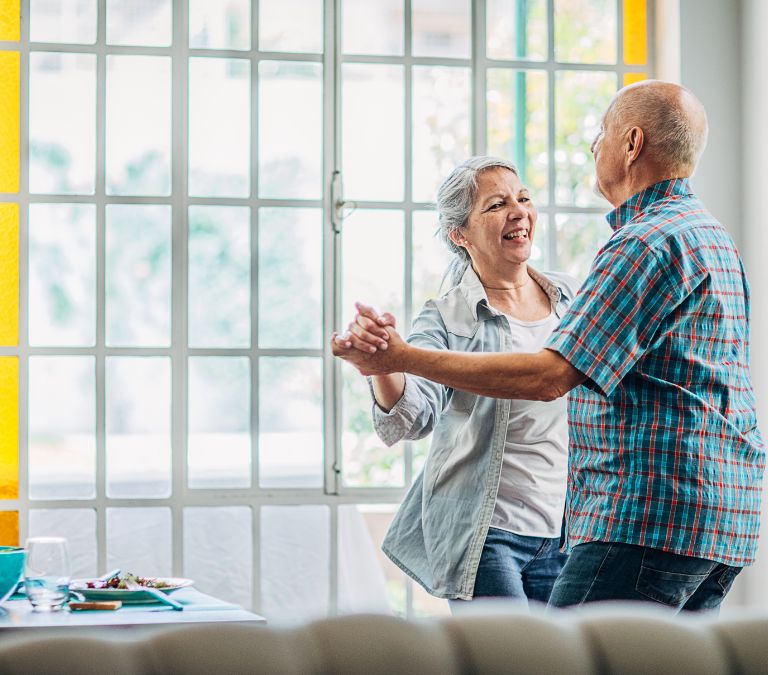
Dancing is a low-impact exercise that can help you burn calories and lose weight. It is also entertaining. Zumba, a popular dance fitness program, uses Latin rhythms for a fast-paced, hip-swaying workout. If you’re not ready for that, crank up the music and get your groove on in the comfort of your living room. Other advantages of regular dancing include improved balance, posture control, gait, strength, and overall physical performance. Dancing also aids in maintaining lean mass and fat mass.
- Kegel exercises
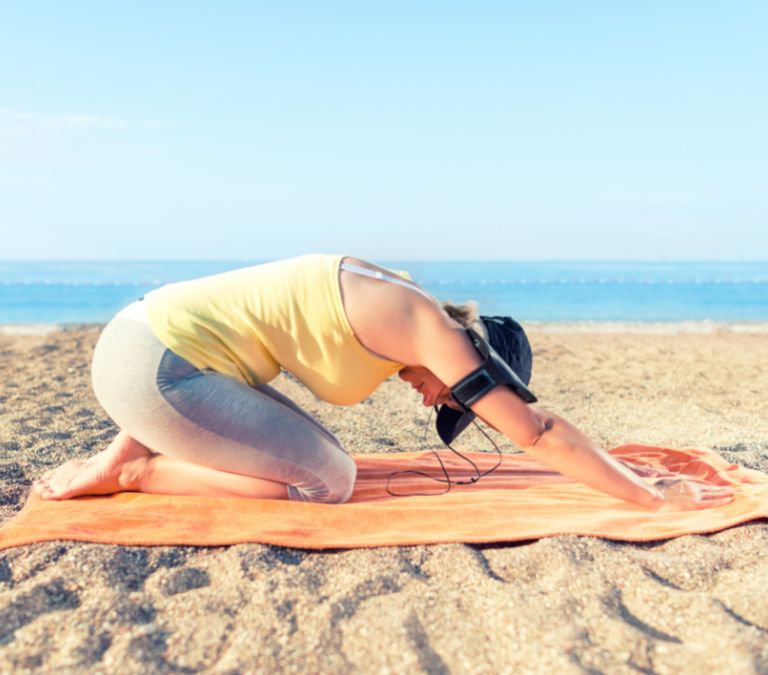
Kegel exercises help strengthen your pelvic floor muscles, which can weaken during menopause as estrogen levels drop. These muscles support your uterus and bladder above your vagina. Strengthening these muscles as a menopause exercise can increase your enjoyment of sex. It can also help with some types of urinary incontinence. (To feel where these muscles are, the next time you urinate, pause in the middle of the flow — the type of contraction you want.) However, please don’t make a move while urinating because it can be harmful.)
To begin, follow these steps:
Find the appropriate muscles: Stop urinating in the middle to identify your pelvic muscles. Once your pelvic floor muscles have been identified, you can perform the exercises from any position, though lying down may be the most comfortable.
Improve your technique: To perform Kegels, imagine sitting on a marble and tightening your pelvic muscles as if you were lifting a marble. Repeat for three seconds at a time, then relax for three seconds.
Maintain your concentration: Concentrate solely on tightening those pelvic floor muscles for the best results. You should also avoid flexing the muscles in your thighs or buttocks; hold your breath. Instead, during the exercises, breathe freely.
Repeat this exercise three times daily: Aim to repeat three sets ten times daily.
Kegel exercises should be a daily part of your workout routine. You can perform kegel exercises any time of the day, be it when you’re sitting at the desk in your office or relaxing on the couch.
Also, if you’re having difficulty performing Kegels, do not be afraid to seek assistance from a doctor or any other health care provider, as they can give you critical feedback you can learn and improve from.
- Yoga
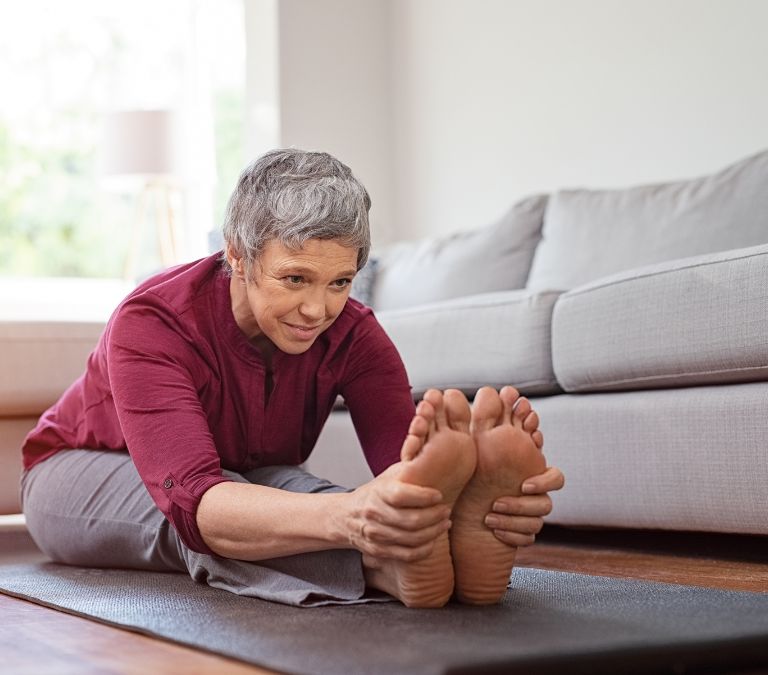
While yoga provides various general health benefits, such as increased physical fitness and balance, multiple studies show that it may be especially beneficial to menopausal women. Yoga supports and restorative poses may provide some relief for some menopausal symptoms. Yoga is a famous ancient practice because of its numerous mind-body benefits. Yoga can help reduce specific menopausal symptoms such as hot flashes and the risk of cardiovascular disease in older women. Let’s explore some yoga techniques below:
Chair yoga: Chair yoga is a low-impact exercise that enhances muscle strength, agility, balance, and flexibility, which are essential health factors for seniors. Chair yoga is a simple, non-traditional form that puts less strain on the muscles, joints, and bones than more traditional forms of yoga.
Chair yoga has also been shown to improve mental health. Regular chair yoga practitioners report better quality sleep, fewer cases of depression, and a general sense of well-being.
Other more traditional yoga techniques you could try are:
- Upward Salute: Eases back pain and stiffness
- Tree Pose: Improves balance and coordination
- Child’s Pose: Helps regulate digestion
- Hero Pose: Boosts blood circulation
- Mountain Pose: Helps reduce stress and anxiety
- Savasana: Promotes comfort and relaxation
- Seated Spinal Twist: This technique helps if you have low mobility
Meditation also helps in improving overall mental well-being. It is essential to remain relaxed and put yourself in a good headspace.
You should also follow these steps to reduce any risk of injury:
Work with a professional: The Yoga Alliance has established standardized guidelines for certified yoga instructors.
Recognize your limitations: Avoid forcing your body into a pose if you are in pain or discomfort, as this could create more distress.
Maintain a steady pace: For women new to yoga, a slow, relaxing pace is more accessible and beneficial. Take it easy!
Adapt your flow: For seniors with limited mobility or imbalance, you need many seated or altered positions. Endeavor to perform poses you’re most comfortable with
Make good use of props: Chairs, medicine balls, and foam blocks can assist in tailoring poses to their specific needs.
Dress comfortably: Clothing that is restrictive or non-flexible can restrict movement and increase the risk of falls or injuries. So it is advisable to wear stretchy clothing.
- Strength Training
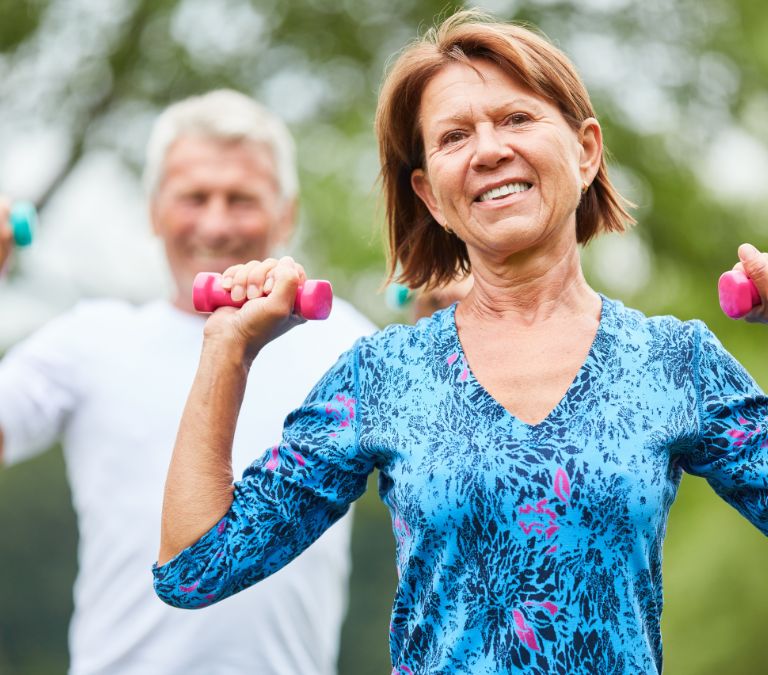
Osteoporosis is a condition menopausal women have a higher risk of contracting, where bones become brittle and weak. It makes performing strength training exercises essential because it helps strengthen bones. How? Because muscle pulling on bone boosts it, weight-bearing exercises result in more robust, less fragile bones. Strength training using weights (such as dumbbells) or machines, hiking, stair climbing, and sports like tennis are all options. Changing the type of exercise you do can keep it interesting and help you stick with it.
Note: Unlike aerobic exercise, which is carried out daily, focused strength training with weights should be done only two or three times per week, with at least two days of rest.
When you’re ready to begin putting together your strength training workout, the first step is to find a comfortable place in your home to exercise. You’ll want to find a place to move your arms and legs freely.
You don’t need much equipment, but if you do want to buy a few things, here are a few suggestions:
- a workout mat
- resistance bands
- dumbbells
- a kettlebell
- a stability ball
- a medicine ball
You could even substitute dumbbells or a kettlebell with water bottles, sandbags, or canned goods.
Let’s discuss some strength training exercises you can try at home:
- Planks: Planks not only strengthen and tone your core muscles (abdominal and lower back) but also helps improve your balance. Planks can also help improve your posture, which helps if you spend most of your day sitting in a chair. You can plank in varying ways. To perform a high plank, position yourself as if you were at the top of a push-up, with your arms and legs straight. A low-plank is an easier option if you are a beginner. Instead of using your hands to support yourself, bend your arms at the elbows and keep your forearms.
- Squats: Another easy exercise you could do at home is squats with a chair. During this exercise, you squat just over a chair as though you were about to sit, but you don’t make contact with the seat. Instead, you get up and repeat the process several times. Squats can help improve your balance as well as tone your lower body. When you first begin, you may find it easiest to perform the exercise with extended hands and arms.
- Chest fly: Our chest muscles are typically underdeveloped. The chest fly is an exercise that works those chest muscles. You’ll need a pair of hand weights to complete the activity. Lie flat on your back on the floor or a mat, knees bent and feet flat on the ground. Raise your arms over your chest, one weight in each hand. Slowly open your arms to the side, lowering your arms and wrists toward the floor but do not touch the base. Maintain a slight bend in your elbows to avoid locking out your arms. Repeat with your arms raised again.
- Standing Balance: Hold on to a sturdy surface, like a countertop or a chair. Lift one foot and balance on the other, holding the position for as long as possible. Switch to your other foot and repeat the process. Work your way up to standing on one foot without holding onto the chair or countertop for a minute or longer, then switch feet and balance on the other side. Stay close to a steady surface to reach it if you need support quickly.
How do you stay motivated?
You might be wondering if you have what it takes to fully embark on this journey, mainly if you aren’t accustomed to regular exercise. Here are some tips:
- Set realistic goals: Many people may find it challenging to transition from no exercise to 30 minutes of exercise per day. That is why it is a good idea to set smaller, more attainable goals. Also, be specific about what you want to achieve. For example, resolve to take the stairs instead of the elevator or escalator during the week. Choose the farthest parking spot at the store rather than the closest. Commit to going for a 10-minute walk after lunch every day. Increase it to 15 minutes after a few weeks. Begin with small goals and gradually increase your confidence and fitness level. As your fitness improves, remember to revise your plans regularly.
- Collaborate with someone: It helps if you have someone to assist you on this journey, such as a partner, friend, or neighbor. A 2018 study discovered that people who walked with companions regularly were more likely to continue walking than those who walked alone. Exercising with a partner or a group is fun; it can also help you stay accountable. For example, if you’re struggling to find the motivation to exercise when you’re exhausted, knowing a friend is counting on you will help motivate you.
- Remember that you don’t need to go to the gym to exercise properly: Many activities, such as dancing and gardening, can also benefit your health.
- Track your progress: Tracking your progress is an excellent way to motivate yourself and realize how much progress you have made. A journal, a fitness tracking app, or a pedometer/step tracker can help track your progress. Wearable fitness trackers have been linked to significant increases in activity levels. Logging your exercise activity can help you track your progress over time and see how far you’ve come. You can even include incentives for reaching milestones. For example, if you walk briskly for 7 minutes every day for a week, reward yourself with something you enjoy, such as a hot bath, new shoes, or that new bestseller you’ve been dying to read.
- Take your time: It is important not to put yourself under pressure. Start slow and walk your way up. Take out time to warm up and cool down. Remember not to do more work than you are capable of. It is your choice.
- Visualize a more robust, healthier you: Sometimes, visualizing the payoff is all that is required to overcome a lack of motivation. This simple but effective technique, known as visualization, can assist you in harnessing your inner drive. In other words, if you can imagine it, you can achieve it. Consider being able to lift and snuggle your grandchildren or dancing the night away at an upcoming wedding. Set your sights on becoming a stronger, more vibrant version of yourself.
- Make it fun: Engaging in activities you enjoy (whether indoors or outdoors) is an integral part of sticking to any exercise regimen. It helps to do exercises you’re most comfortable doing
- Invest in training equipment: Owning training equipment can also help maximize every workout and get you as much value as possible. Consider shopping for simple equipment such as dumbbells or something more advanced like a rowing machine.
Even without our hormones, we can still enjoy a decent quality of life after menopause. According to research, when postmenopausal women participate in a comprehensive exercise program, they benefit from maintaining a healthy body, bone density, and good mental health.
Exercise can help control osteoporosis, the most common ailment in older women. Even a moderate exercise regimen keeps the weight under control and decreases the risk of stress, depression, and anxiety, all of which are common during and after menopause. Exercise increases muscle mass, strength, balance, and coordination. As a result, unlike medical treatment, exercises work on multiple aspects of one’s health simultaneously.
So why not start exercising today?

